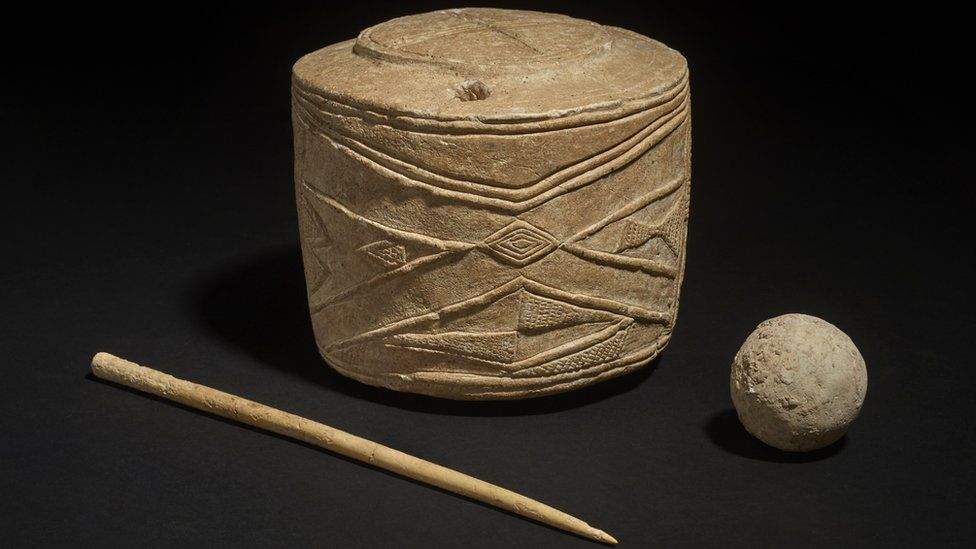A rare 5,000-year-old plaster object, considered one of the most important prehistoric artworks ever discovered, will be on display at the British Museum for The World of Stonehenge exhibition scheduled to run from Feb. 17 to July 17.This is the “Burton Agnes Drum,” found in 2015 in East Yorkshire at the burial site of three children, and immediately identified by archaeologists as the most important work of prehistoric art discovered in Britain in the last century.
It is a cylindrical sculpture, shaped like a drum, decorated with highly elaborate motifs, and dating from the time when Stonehenge was built. Only four such objects are known to date. The Burton Agnes drum was found at a site about 20 km away from where the Folkton drums were found. The name by which these objects are identified does not refer to their use (according to archaeologists, they were not in fact musical instruments), but to their shape: it is likely that they were amulets buried with children to protect them. Other objects were also found near the Burton Agnes drum: a plaster ball and a bone pin. Through radiocarbon dating of the child’s bones, the burial date was estimated to be between 3005 and 2890 B.C., and the objects are also thought to date from the same period.
For the British Museum itself, this is one of the most significant discoveries in U.K. history, since it is an object similar to the three “Folkton drums” that were discovered in North Yorkshire in 1889. “This is a truly remarkable discovery,” Neil Wilkin, curator of the British Museum, said in a note, “and it is the most important work of prehistoric art found in Britain in the last 100 years. Folkton drums have long remained a mystery to experts for over a century, but this new example is finally beginning to give us some answers. In my opinion, the Burton Agnes drum is carved in an even more complex way and reflects connections between communities in Yorkshire, Stonehenge, the Orkney Islands and Ireland. Analysis of its carvings will help decipher the symbolism and beliefs of the era in which Stonehenge was built.”
 |
| An extremely rare prehistoric sculpture discovered in 2015 will be on display at the British Museum |
Warning: the translation into English of the original Italian article was created using automatic tools. We undertake to review all articles, but we do not guarantee the total absence of inaccuracies in the translation due to the program. You can find the original by clicking on the ITA button. If you find any mistake,please contact us.